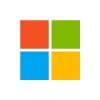The distinction between hardware and software is fundamental in the world of computing and technology. Here’s a detailed explanation of both concepts and how they differ:
1. Hardware
Definition: Hardware refers to the physical components of a computer or electronic device. These are the tangible parts that you can touch and see. Hardware encompasses all the physical equipment involved in the computing process.
Examples:
- Central Processing Unit (CPU): The brain of the computer that performs calculations and executes instructions.
- Memory (RAM): Temporary storage that holds data and instructions that the CPU is currently using.
- Storage Devices: Hard drives (HDDs), solid-state drives (SSDs), and other forms of long-term storage.
- Motherboard: The main circuit board that houses the CPU, memory, and other components, and connects them together.
- Input Devices: Keyboards, mice, and scanners that allow users to input data into the computer.
- Output Devices: Monitors, printers, and speakers that provide information from the computer to the user.
- Networking Hardware: Routers, switches, and modems that enable network communication.
Characteristics:
- Physical: Hardware is tangible and can be physically touched and interacted with.
- Durable: Hardware components have a physical lifespan and can wear out or become obsolete over time.
- Fixed Functionality: The functionality of hardware is generally fixed and does not change unless physically modified or upgraded.
2. Software
Definition: Software refers to the programs, applications, and operating systems that run on a computer or electronic device. It consists of instructions and data that tell the hardware what to do and how to perform various tasks.
Examples:
- Operating System (OS): The fundamental software that manages hardware resources and provides services for other software. Examples include Windows, macOS, and Linux.
- Applications: Software designed for specific tasks or applications, such as word processors (Microsoft Word), web browsers (Chrome, Firefox), and media players.
- Utilities: Programs that perform maintenance tasks, such as antivirus software, file management tools, and system diagnostics.
- Programming Languages: Languages like Python, Java, and C++ used to write software and applications.
Characteristics:
- Intangible: Software is not physical; it consists of code and data that are executed by hardware.
- Flexible: Software can be easily updated, modified, or replaced. New versions can be installed, and functionality can be changed through updates.
- Dependent on Hardware: Software requires hardware to run. Without hardware, software cannot function, but hardware alone does not perform tasks without software.
Relationship Between Hardware and Software
- Interdependence: Hardware and software are interdependent. Hardware needs software to operate, while software requires hardware to run. For example, a computer’s CPU (hardware) needs an operating system (software) to manage its operations and execute programs.
- Interaction: Software sends instructions to hardware to perform specific tasks. For instance, when you run a word processor, the software interacts with the computer’s CPU and memory to execute commands and display text on the screen.
- Development and Evolution: Hardware typically evolves at a slower pace than software. Hardware improvements often require significant physical changes and advancements, whereas software can be rapidly developed and updated.
Illustrative Analogy
Consider a car as an analogy:
- Hardware: The car’s engine, wheels, chassis, and other physical components are analogous to computer hardware.
- Software: The car’s manual and navigation system, which provide instructions and enhance functionality, are analogous to computer software. Just as a car’s manual guides how to operate the vehicle, software guides the hardware in performing tasks.
Summary
- Hardware: The physical components of a computer or device, including devices like CPUs, memory, and input/output devices. It is tangible and has a fixed functionality.
- Software: The programs and instructions that run on a computer or device, such as operating systems and applications. It is intangible, flexible, and dependent on hardware to execute tasks.
Understanding the distinction between hardware and software is crucial for anyone working with technology, as it helps in troubleshooting, system design, and effective utilization of computing resources.


